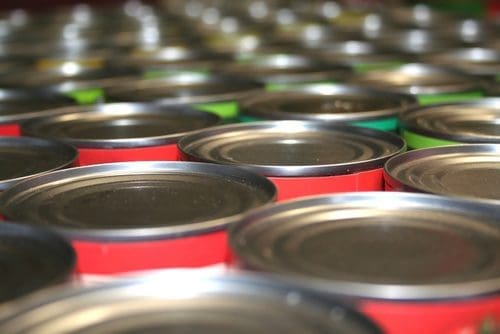X-ray machines have becomes staples of the healthcare industry over the last century, but the technology's uptake in other industries has been comparatively slow. That's started to change in recent years though, with new units limiting radiation exposure and making the machines viable in all sorts of sectors. One of the biggest proponents of X-ray development in recent years has been the food industry, specifically in the contaminant detection arena.
Using X-ray machines instead of traditional detection methods offers a wealth of benefits, and in this article, we'll take a closer look at some of these. We'll also talk about why accuracy is so important in food production, and look at how the right detection measures can protect your business from serious repercussions.
X-rays are now safer than ever, and SRO Technologies' machines emit an absolute minimum amount of radiation.
Why use X-rays for contaminant detection?
In the recent past, the best way to check for contaminants was with a metal detector. This worked fine in theory, but left far too many possibilities for a foreign object to slip through the cracks. What if the contaminant was stone, bone or plastic? What if the food being tested was packaged in metallic foil? In both of these scenarios, a metal detecting machine would be effectively useless, but X-rays provide a solution.
Because they detect changes in density rather than relying on any specific characteristic of the contaminant, X-rays show every detail of a package's internal composition. This more comprehensive scan shows not only the presence of dangerous objects, but also other issues relevant to quality control. For example, an X-ray can reveal one can of produce out of a batch of thousands that is only half full, allowing a company to avoid the embarrassment of a customer being short-changed by their groceries.
The big question mark over X-rays in the past has been radiation, and this is a particular concern in the food and beverage industry where there are end-consumers as well as factory employees to consider. Fortunately, X-rays are now safer than ever, and SRO Technology's machines emit an absolute minimum amount of radiation.

The importance of accurate contaminant detection
As with all aspects of the food processing business, accuracy is vital to contaminant detection. In fact, having the peace of mind that each shipment of product leaving your factory is safe for human consumption is arguably the area where accuracy is most important. The repercussions of a single contaminant slipping through can be devastating – both financially and in terms of your brand's reputation.
SRO Technology's machines apply the principles of Hazard Analysis and Critical Control Points (HACCP).
While a foreign object in a can of beans is obviously a worst-case scenario, the high level of accuracy achieved with X-ray machines has made cases such as this very rare. Instead, the focus is now turning to the improvement of quality in other ways, with a few examples of target areas including broken seals, physical defects, fill levels and packaging integrity. To cover all of these different bases, your X-ray machines need to be of the highest standard.
To this end, SRO Technology's machines apply the principles of Hazard Analysis and Critical Control Points (HACCP). This plan was developed in the 1960s as a way to address concerns surrounding quality and safety, and it involves seven key principles, including the identification of any parts of the manufacturing process that pose particular risk.
By integrating one of our machines into your business's HACCP program, you can rest easy knowing that you'll have a system in place to identify any hazards before they turn into serious issues. If you'd like to find out more, contact SRO Technology today.



Recent Comments